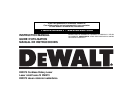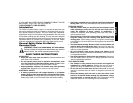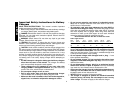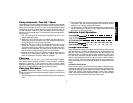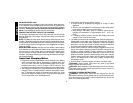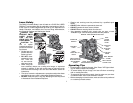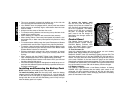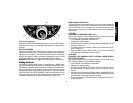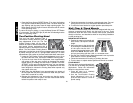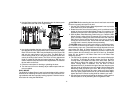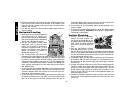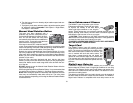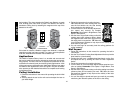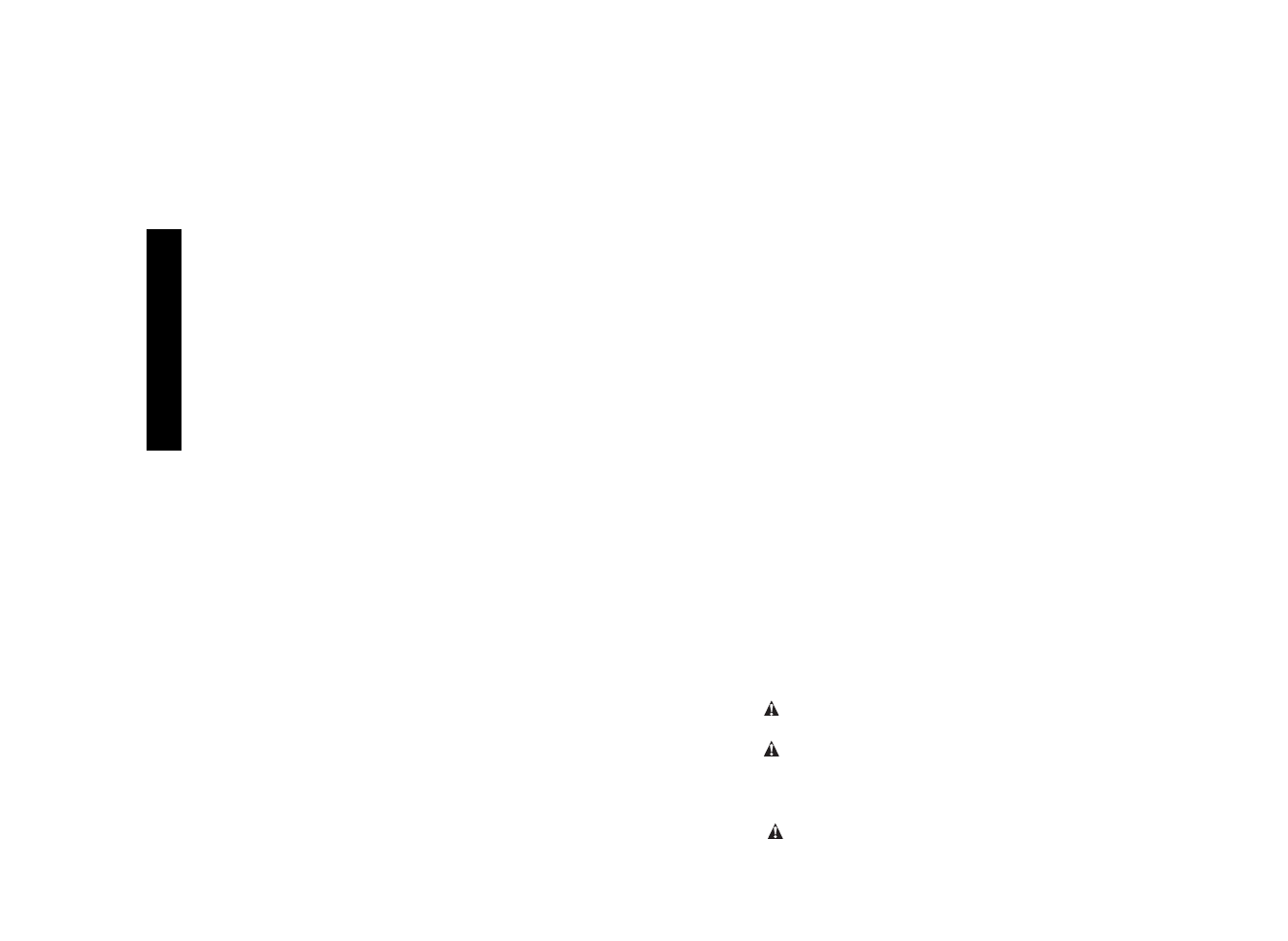
6
English
PROBLEM POWER LINE
Some chargers have a Problem Power Line indicator. When the charg-
er is used with some portable power sources such as generators or
sources that convert DC to AC, the charger may temporarily suspend
operation, flashing the red light with two fast blinks followed by a
pause. This indicates the power source is out of limits.
LEAVING THE BATTERY PACK IN THE CHARGER
The charger and battery pack can be left connected with the red light
glowing indefinitely. The charger will keep the battery pack fresh and
fully charged.
NOTE: A battery pack will slowly lose its charge when kept out of the
charger. If the battery pack has not been kept on maintenance charge,
it may need to be recharged before use. A battery pack may also slow-
ly lose its charge if left in a charger that is not plugged into an appro-
priate AC source.
WEAK BATTERY PACKS: Chargers can also detect a weak battery.
Such batteries are still usable but should not be expected to perform
as much work. In such cases, about 10 seconds after battery inser-
tion, the charger will beep rapidly 8 times to indicate a weak battery
condition. The charger will then go on to charge the battery to the high-
est capacity possible.
Important Charging Notes
1. Longest life and best performance can be obtained if the battery
pack is charged when the air temperature is between 65°F and
75°F (18°- 24°C). DO NOT charge the battery pack in an air tem-
perature below +40°F (+4.5°C), or above +105°F (+40.5°C). This
is important and will prevent serious damage to the battery pack.
2. The charger and battery pack may become warm to touch while
charging. This is a normal condition, and does not indicate a prob-
lem. To facilitate the cooling of the battery pack after use, avoid
placing the charger or battery pack in a warm environment such
as in a metal shed, or an uninsulated trailer.
3. If the battery pack does not charge properly:
a. Check current at receptacle by plugging in a lamp or other
appliance
b. Check to see if receptacle is connected to a light switch which
turns power off when you turn out the lights.
c. Move charger and battery pack to a location where the sur-
rounding air temperature is approximately 65°F - 75°F (18°-
24°C).
d. If charging problems persist, take the tool, battery pack and
charger to your local service center.
4. The battery pack should be recharged when it fails to produce suf-
ficient power on jobs which were easily done previously. DO NOT
CONTINUE to use under these conditions. Follow the charging
procedure. You may also charge a partially used pack whenever
you desire with no adverse affect on the battery pack.
5. Under certain conditions, with the charger plugged into the power
supply, the exposed charging contacts inside the charger can be
shorted by foreign material. Foreign materials of a conductive
nature such as, but not limited to, steel wool, aluminum foil, or any
buildup of metallic particles should be kept away from charger
cavities. Always unplug the charger from the power supply when
there is no battery pack in the cavity. Unplug charger before
attempting to clean.
6. Do not freeze or immerse charger in water or any other liquid.
WARNING: Shock hazard. Don’t allow any liquid to get inside
charger. Electric shock may result.
CAUTION: Never attempt to open the battery pack for any reason.
If the plastic housing of the battery pack breaks or cracks, return to a
service center for recycling.
CHARGER CLEANING INSTRUCTIONS
WARNING: Shock hazard. Disconnect the charger from the AC
outlet before cleaning. Dirt and grease may be removed from the exte-
rior of the charger using a cloth or soft non-metallic brush. Do not use
water or any cleaning solutions.



